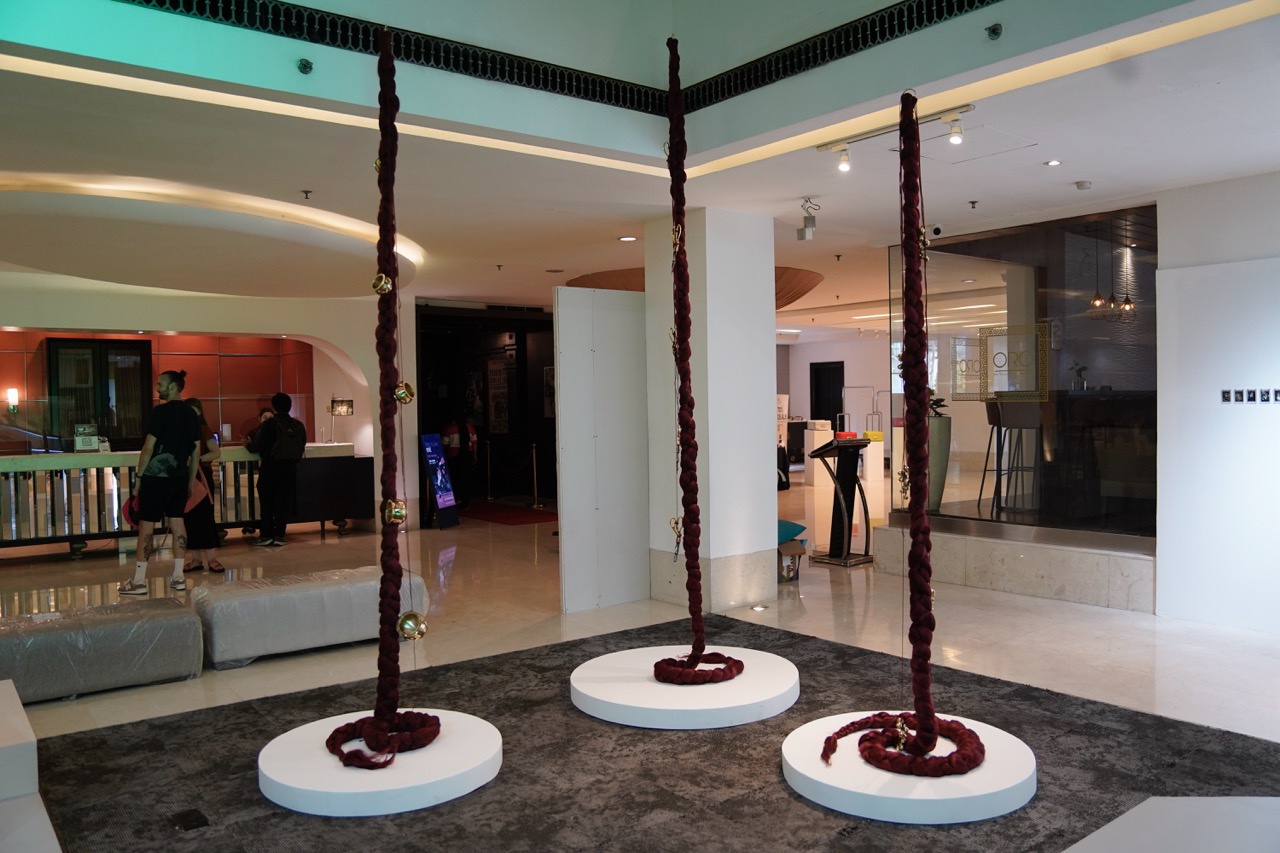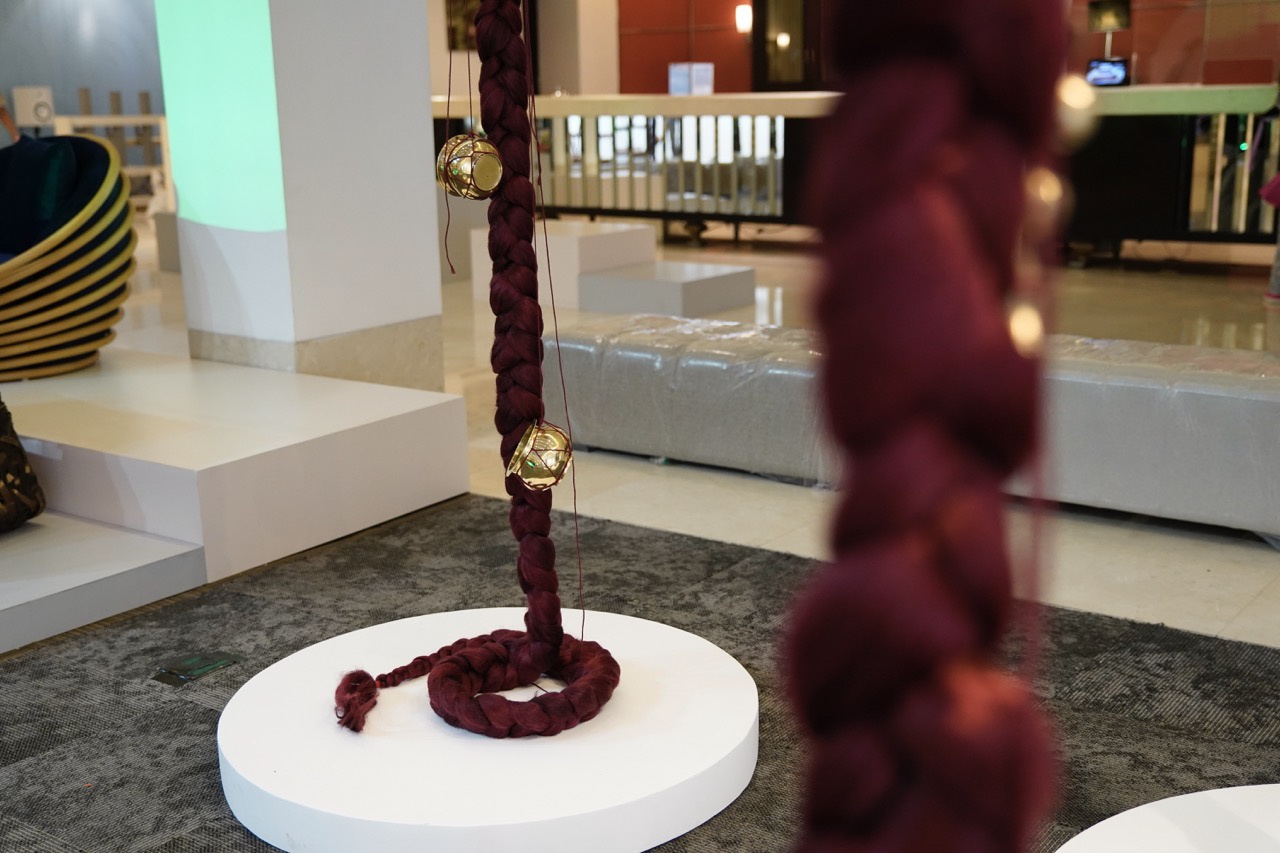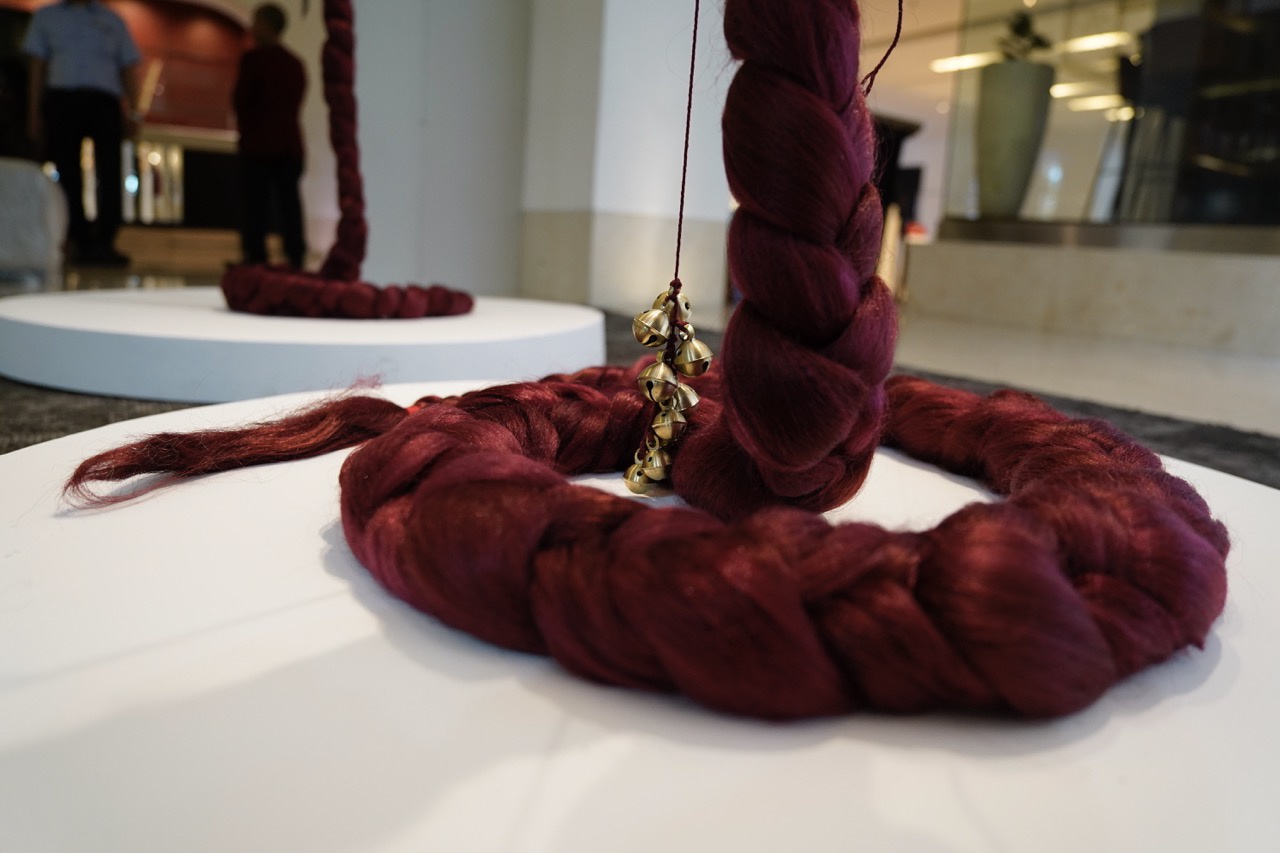"The Indonesian Contemporary Art & Design, better known as ICAD, returns for its 14th iteration, running from 10 October to 10 November 2024. Initiated by the Design+Art Indonesia Foundation, the annual showcase highlights interdisciplinary collaborations between art, design, and multiple fields, such as architecture, film, fashion, and technology, to name a few. Taking place at Grand Kemang in Jakarta, ICAD 14 features 74 local and international artists spanning various disciplines. The artworks are curated into seven sections: Special Appearance (Tribute), Special Appearance (Region), In Focus, Featured, Special Zone, Collaboration, and Open Call. They are spread across four distinct zones within the venue."
...
"Another highlight from ‘In Focus’ is ‘Mutation of Thought’ by Balinese artist Citra Sasmita. Known for unravelling the myths and misconceptions of Balinese art and culture, Sasmita continues to convey these themes in this artwork. Drawing inspiration from the Mahabharata epic, Sasmita uses the narrative as a metaphor for the ongoing exploitation of Bali’s natural and cultural resources by the tourism sector, which obscures the island's darker history and tragedies. The three braided strands of red hair symbolise the Balinese people's right to live and find purification in their native land."



Citra Sasmita, Mutation of Thought, 2024 Synthetic hair (@400cm), Scissors, Bells, Brass bowls, Variable Dimention. Images courtesy of Indonesian Contemporary Art & Design (ICAD).
In the epic Mahabharata, Drupadi ends the Kurusetra fragment through the scene of
washing her hair with the blood of the Kurawa who had degraded the status of the
Pandawa's wife through a cheat at the gambling table. The story of Drupadi's Revenge is
a metaphor for the body of a woman who experiences social repression and a complex
metaphor for viewing a geographical landscape. Like a woman's body, the archipelago
landscape is often considered through exoticism that attracts explorers to explore and
then exploit it. This is also what happened to Bali for decades since colonialism set foot
on this island in the early 20th century. Through the image of the last paradise, all the
potential beauty built through nature, culture, and human life is packaged for tourism
purposes. In this fascination, all the dark history and tragedies of the Balinese people
seem to be covered up without a trace. History records that the Puputan War, the 1965
tragedy, to the Bali Bombing have left so many victims.
Through this work, we should be questioning, why should a peaceful paradise be built
on the land of blood. Drupadi's red hair is the essence of the right to life of Balinese
people with all the expanse of nature, culture, and life practices that accompany it. As a
sacred temple symbolized by three braided hairs, Balinese people have the right to live
and purify themselves in their own homeland.

